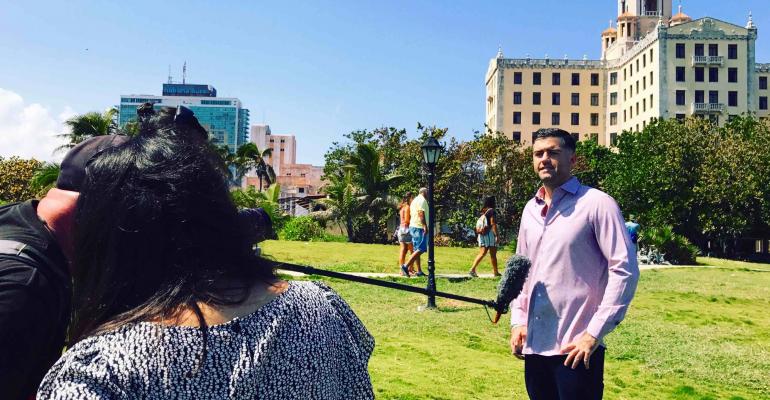By now, however, most areas of the capital and other key cities that are frequented by foreign travelers are ready to receive visitors, according to a US-based Cuba expert who just returned from a three-day inspection tour with his team on the island.
Places open for business include Havana, Santiago de Cuba, Cienfuegos, Trinidad, Viñales and the cities of Camagüey and Holguín, said Collin Laverty, an expert on Cuba and US-Cuba relations and the founder and president of Cuba Educational Travel.
All these cities are 'almost untouched and fully functional,' according to Laverty, whose company runs trips focused on art, culture, history, politics and economics. He has crafted highly specialized programs for individuals arriving by cruise, and works with lines on market assessment, entry and operations.
Even Varadero, a major resort area east of the capital that was hit hard by Irma, has some hotels that were unaffected.
It is mainly small towns on the north coast that sustained heavy damage and will take time to rebuild.
Laverty was in Havana during Irma and recently went back to check on progress with his team there. They completed an extensive inspection of roads, hotels, restaurants, art galleries and other places foreign visitors frequent.
'The damage to Havana's infrastructure is very limited,' Laverty told Seatrade Cruise News. 'Most severe flooding was along the seawall, and certain buildings had damage. The rest of the city is largely untouched. Most tourism sites didn't suffer any damage.'
Havana was mainly impacted by strong winds that caused massive swells that swept over the malecón (seawall) and flooded houses and structures, including the US Embassy, in neighborhoods close to the shore.
As for Havana and other key tourist areas, there is 'no post-hurricane instability,' Laverty added, 'no major shortages of food and water and no uptick in crime. Nothing that should impact travelers to Cuba who are coming on tours.'
People who recently visited with his company, Cuba Educational Travel, had a good experience.
Cruise ships have already begun returning. As earlier reported, Empress of the Seas, for one, first went back last Wednesday and has resumed its regular Cuba service from Tampa.
Royal Caribbean International said the cruise terminal, port and transportation were ready and all tours ran as scheduled.
Besides overcoming perceptions of widespread damage from the lingering media images of Irma's destruction several weeks ago, travel operators are challenged by a US Department of State Cuba travel warning that advises citizens to 'carefully consider the risks of travel to Cuba while Hurricane Irma recovery efforts are under way.'
Updated on Sept. 18, the advisory was softened to note: 'Major roads are now open in Havana and power and water service has been restored in most of the city, but some parts of the country may be without power and running water. North central Cuba suffered severe damage and should be avoided until further notice.'
Laverty was in touch with the State Department and the US Embassy in Havana today and he expects the travel warning to be rescinded 'quite soon.'
Copyright © 2024. All rights reserved. Seatrade, a trading name of Informa Markets (UK) Limited. Add Seatrade Cruise News to your Google News feed.


